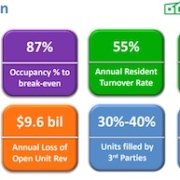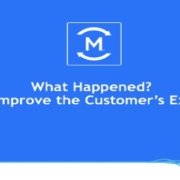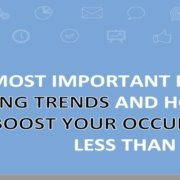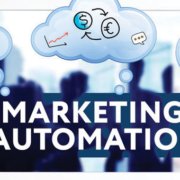Senior Living Leads: Think Quality vs. Quantity
Whenever we deploy lead scoring and marketing automation for a client, we always receive the inevitable panicked call from someone on the sales team: Where did all the leads go?
Here’s the thing: The leads are still there. What’s changed is the way the leads are being handled. And that’s a good thing. Sales-qualified leads (SQLs) move onto the sales team, while the marketing automation nurtures the not-ready-yet leads. (Also known as marketing-qualified leads or MQLs.)
Why do we follow this strategy instead of the old “move all leads to sales no matter what” approach? Simple. Most senior living leads aren’t ready to buy.
Consider the following:
- 80% of new leads never translate into sales. [Small Biz Genius]
- 96% of visitors who come to your website aren’t ready to buy. [Small Biz Genius]
- 50% of the leads you generate are qualified, but not ready to buy right now. [Business.com]
- 25% of the leads you generate are totally unqualified; they won’t ever buy. [Business.com]
- 19% of buyers want to connect with a salesperson during the awareness stage. 60% want to connect during the consideration stage. 20% want to talk during the decision stage. [HubSpot]
- At least 50% of your prospects are not a good fit for what you sell. [HubSpot]
Obviously, mileage will vary depending on a variety of factors, but the overarching theme to keep in mind is this: Since most leads aren’t ready to buy, most won’t be interested in a sales interaction. So why serve up not-ready leads to the sales team?
Doesn’t it make more sense for your sales team to work the leads that have the highest potential of converting while your marketing team nurtures the cooler and warmer leads to turn red-hot? Of course it does!
Still, this can be a hard sell to a sales team that’s used to seeing a big bucket of all leads. So, what can you do to help your sales team embrace the idea that lead quality trumps quantity? Get them to focus on other things.
Instead of fixating on the number of senior living leads, sales reps should focus on the following:
1. Give sales-qualified leads the VIP treatment.
Sales-qualified leads are gold! Treat them as such. In other words, don’t give up on your SQLs after only one or two attempts.
Here’s more compelling stats from our friends at HubSpot:
- 60% of customers say no four times before saying yes. And yet 48% of salespeople never even make a single follow-up attempt.
- 80% of sales require 5 follow-up calls. And yet 44% of salespeople give up after one follow-up call.
- 70% of salespeople stop at one email. Yet if you send more emails, you’ve got a 25% chance to hear back.
2. Revisit buyer personas to ensure a solid understanding of prospects’ pain points.
Revisiting your buyer personas will help ensure the sales reps are familiar with all the relevant details—details that will help the reps ultimately sell better.
Reminder, personas are fictional representations of your ideal prospect. These personas provide important insights into things like challenges the prospect is facing, their financial health, and what they’re looking for in senior living.
Why is persona work so critical? If sales reps are only focusing on sales-qualified leads, the leads will probably closely match a corresponding persona. Now, instead of the sales rep having to rely on a broad one-size-fits-all sales pitch, they can customize their presentations to solve for the lead’s specific challenges, thanks to the intelligence provided by the persona.
Isn’t that a much smarter sales strategy?
3. Audit sales collateral used in follow-up communications with SQLs.
Sales reps might be working fewer leads, but they’ll be working better leads. Once again, you need to consider these your VIP leads and give them the VIP treatment. This most certainly includes how you follow up with them—including the words you use in your emails and the content you provide in brochures and guides.
Audit your existing follow-up materials, especially all emails. Create email templates that cover most scenarios you encounter. For example, create a set of emails for that awesome lead who is on the fence between your community and one of your competitors. Another set of emails for the hot lead who is leaning your way, but just needs a nudge. And so forth.
Doing this legwork now will make it easier to quickly customize when you need to send something out.
4. Offer an array of options for interacting with senior living leads.
If the pandemic taught us anything it’s this: It is possible to sell senior living via virtual methods like Zoom and online tours. And just because the pandemic is winding down doesn’t mean you need to abandon these methods, either.
Providing VIP prospects with multiple ways for them to interact with you will help make it easier for them to do exactly that.
5. Provide input to marketing teams regarding ideas for emails that nurture marketing-qualified leads (MQLs).
The marketing team usually manages the lead nurturing campaigns, but sales should provide input. After all, everyone’s goals are aligned—to convert MQLs to SQLs to move-ins. Sales reps often hear feedback from prospects regarding info that the prospects sought during the buying process but couldn’t find. Share these learnings with your marketing counterparts.












